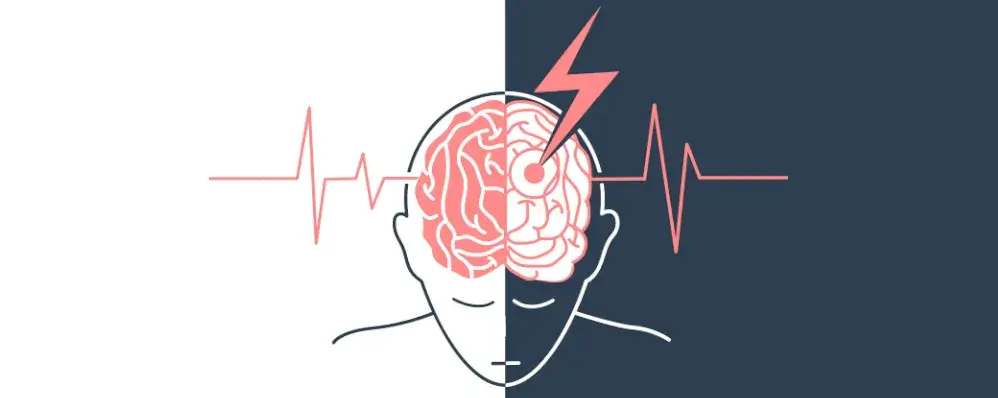Stroke Vs Seizure: How to tell the Difference
May 15, 2023 | Brain and Spine Specialists

If you or a loved one have ever suffered from a stroke or seizure, you know how frightening and confusing it can be to determine which condition is being experienced. Despite some similarities between these two health issues, there are also several differences. Knowing what to look out for can make all the difference in getting access to proper care quickly and efficiently. Here we will discuss the primary indicators of strokes versus seizures so that anyone dealing with this situation is better equipped to handle it with confidence.
Signs of Stroke
A stroke occurs when blood circulation to the brain is disrupted, which can result in serious damage. Signs of stroke include sudden weakness or numbness in the face, arm or leg, especially on one side of the body. Other symptoms may include difficulty speaking or understanding speech, sudden confusion, trouble seeing in one or both eyes, and difficulty walking or maintaining balance. Immediate medical attention is crucial if these symptoms occur, as fast treatment can greatly improve outcomes and reduce the chance of long-term disabilities. Remember, time is brain, so don’t delay seeking help if you suspect a stroke.
If someone is experiencing a stroke, it’s crucial to seek medical attention immediately. To help identify a stroke, remember the acronym F.A.S.T:
F – for face drooping: Watch for one side of the face drooping or feeling numb and pay attention to an uneven smile.
A – for arm weakness: If one arm feels weak or numb, check if it droops downward when both arms are raised.
S – for speech difficulty: Slurred speech may be a sign of a stroke.
T – for time to call 911: Taking prompt action during a stroke is essential.
Signs of Seizure
Seizures can be a scary experience not only for the person having them but also for those around them. Signs of a seizure can include convulsions, stiffening of the body, repetitive movements such as lip-smacking or blinking, and a loss of consciousness. It’s important to note that not all seizures look the same and can vary based on the type and severity of the seizure. If you witness someone having a seizure, make sure to stay calm and help them by placing them on their side, removing any objects around them that may cause harm, and time the duration of the seizure. People with epilepsy can also die from problems that occur during or after a seizure, so remember, prompt medical attention is crucial in managing seizures.
How to Quickly Identify the Difference of a Stroke VS Seizure
When it comes to identifying the difference between a stroke and a seizure, time is of the essence. It is crucial to act quickly because the symptoms of each can mimic one another, and prompt treatment can make a difference in long-term outcomes. While both conditions can occur suddenly, a stroke typically affects one side of the body and can cause weakness or numbness in the face, arm, or leg. A seizure, on the other hand, can cause convulsions, loss of consciousness, or abnormal movements. If you or someone you know is experiencing symptoms of either a stroke or seizure, seek medical attention immediately. Remember, it’s better to be safe than sorry.
Can a Stroke Cause Seizures
A stroke occurs when there is an interruption or reduction in the blood supply to the brain, causing brain cells to die. While seizures are not typically associated with stroke, they can occur as a result of the damage caused by the stroke. This happens because the brain’s electrical activity can become disrupted after a stroke. Seizures can be scary and disruptive, but there are treatments available to help manage them.
Preventative Measures to Take for Reduced Risk of Stroke and Seizure
Preventative measures for reducing the risk of stroke and seizure are important to take, as both can have positive effects on health and well-being. One important key is to maintain a healthy lifestyle, including regular exercise and a balanced diet. Another important factor is keeping blood pressure and cholesterol levels under control, as these can significantly increase the risk of both stroke and seizure. It is also important to manage any underlying medical conditions, such as diabetes or heart disease, that can increase the risk of stroke or seizure. By taking these preventative measures, individuals can decrease their risk of experiencing these potentially debilitating health issues.
How to Find Help and Support for Dealing with Neurological Events
Dealing with neurological events can be a challenging and isolating experience. It’s crucial to seek help and support during this time. One way to find assistance is to speak with your healthcare provider or a neurologist. Our Brain and Spine Specialists help neurology patients throughout North Florida daily, and we can do the same for you.
As it is clear, strokes and seizures can have serious short term and long-term impacts on a person’s lifestyle. It is important to be able to quickly recognize the difference between a stroke and seizure in order to get the help you or someone around you needs. While some risk factors of neurological events are out of our control, such as age, heredity and gender, there are many preventative measures we can take to reduce individual risk of stroke or seizure. If you find that you or someone around you has any signs or symptoms of a stroke or seizure event then it is important to seek professional help from brain and spine specialists immediately. Contact Brain and Spine Specialists of Panama City today to schedule a consultation appointment – this one phone call may just be the best safety measure that you ever take.
